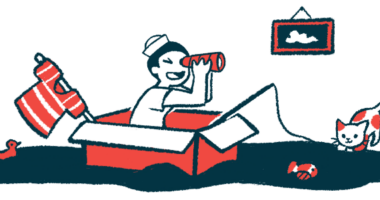Most hemophilia A children were bleed-free after a year on Altuviiio
Data from Phase 3 XTEND-Kids expected to support EU application

Most children with hemophilia A given Altuviiio (efanesoctocog alfa) once a week were bleed-free throughout about a year of treatment.
That’s according to top-line data from the Phase 3 XTEND-Kids trial (NCT04759131) announced by Sobi and Sanofi, the therapy’s co-developers, less than a month after the U.S. Food and Drug Administration (FDA) approved Altuviiio for adults and children with hemophilia A.
These and earlier data from studies that tested Altuviiio in older patients are expected to support an application for its approval in the European Union (EU).
“These data confirm that [Altuviiio] has the potential to become a new standard of care for hemophilia A with higher protection for longer across treatment scenarios for all age groups. We are excited to move ahead with regulatory submission in the EU and look forward to sharing these results at a future medical meeting,” Anders Ullman, MD, PhD, head of research and development and medical affairs and chief medical officer at Sobi, said in a company press release.
“We strive for a future where every child with hemophilia can play without fear, travel free from a rigid treatment schedule, and pursue their dreams unencumbered by worry,” Karin Knobe, MD, PhD, therapeutic area head of rare diseases and rare blood disorders at Sanofi, said in a separate press release.
Hemophilia A is caused by mutations that interfere with the production of clotting protein factor VIII (FVIII). Altuviiio is a new long-lasting replacement therapy designed to provide patients with a modified version of the protein. The FDA approval covers its use as a prophylactic therapy to lower the frequency of bleeding episodes and as an on-demand treatment to control bleeds.
Altuviiio is administered via injection into the bloodstream once a week, a notably less frequent dosing schedule than other approved replacement therapies for hemophilia A that generally require dosing two or three times a week as a prophylactic.
XTEND-Kids enrolled 74 children with hemophilia A up to age 12, all of whom were treated with Altuviiio. A separate Phase 3 trial, XTEND-1 (NCT04161495), tested the therapy in older adolescents and adults and results showed most patients were free of bleeds after a year of treatment.
The main goal of XTEND-Kids was to assess the safety of Altuviiio in younger children, particularly to see if they would develop inhibitors — neutralizing antibodies made by the immune system that can target the delivered FVIII and prevent it from working as intended.
Of the 74 children, 65 received at least 50 doses, about a year of treatment with once-weekly dosing. Top-line results showed that none of the 74 enrolled in XTEND-Kids developed FVIII inhibitors, meeting the study’s main goal.
The median annual bleeding rate was zero in the study, meaning most patients were completely free of clinically relevant bleeds. The estimated mean rate of bleeds was 0.89 a year, again reflecting that bleeds were uncommon with Altuviiio.







